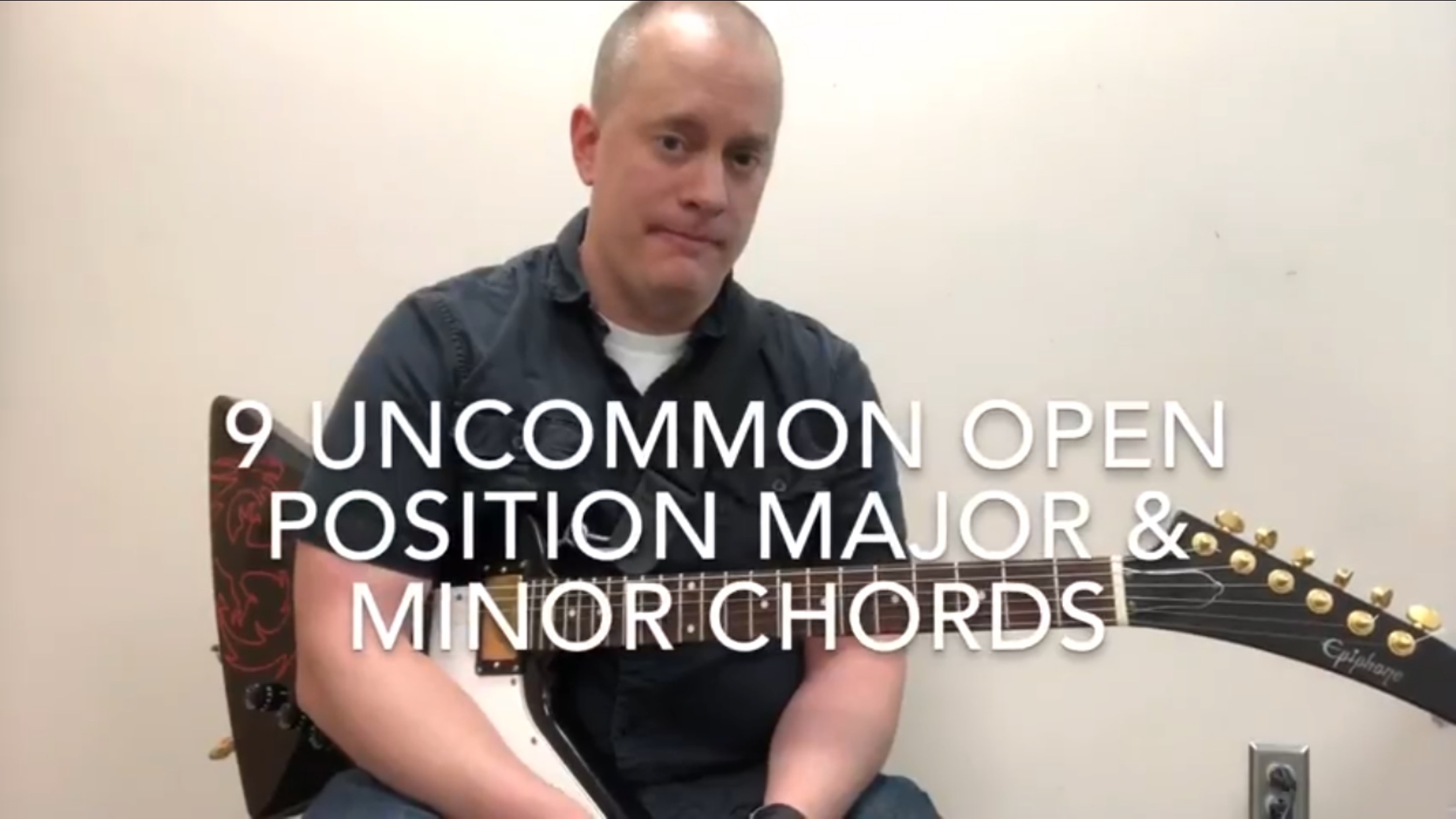
There are certain major and minor chords that are typically played as barre chords that have great open position style alternative voicings. In this lesson, we’re going to explore 9 of these uncommon voicings and how they can be used. Click the link below to see the full video.
This lesson is geared towards the guitar player who knows the typical open position major and minor chords, and maybe even 7th chords, and is looking to expand their chord vocabulary. This lesson will…
- Expand one’s chord vocabulary
- Give open position alternatives to chords that are typically played as barre chords
- Improve one’s muting technique
- Show creative solutions to playing a chord progression
- Provide some easier open position versions of barre chords for players that have yet to learn or are new to barre chords.
Before you tackle this lesson, you should already know these chords.
A, C, D, E, G, Am, Dm, and Em
While it’s not necessary to know your open position Dominant 7th chords (or just 7th chords, for short), I suggest that you learn those first before getting into this lesson. Those chords are…
A7, B7, C7, D7, E7, and G7
The 9 uncommon open position major and minor chords are Gm, Eb, Bb, Bm, Cm, C#m, F#m, B, and G#m. Here they are separated into major and minor groups.
Major: Bb, B, Eb
Minor: Bm, Cm, C#m, F#m, Gm, G#m
Here is the notation to follow along with the lesson video.
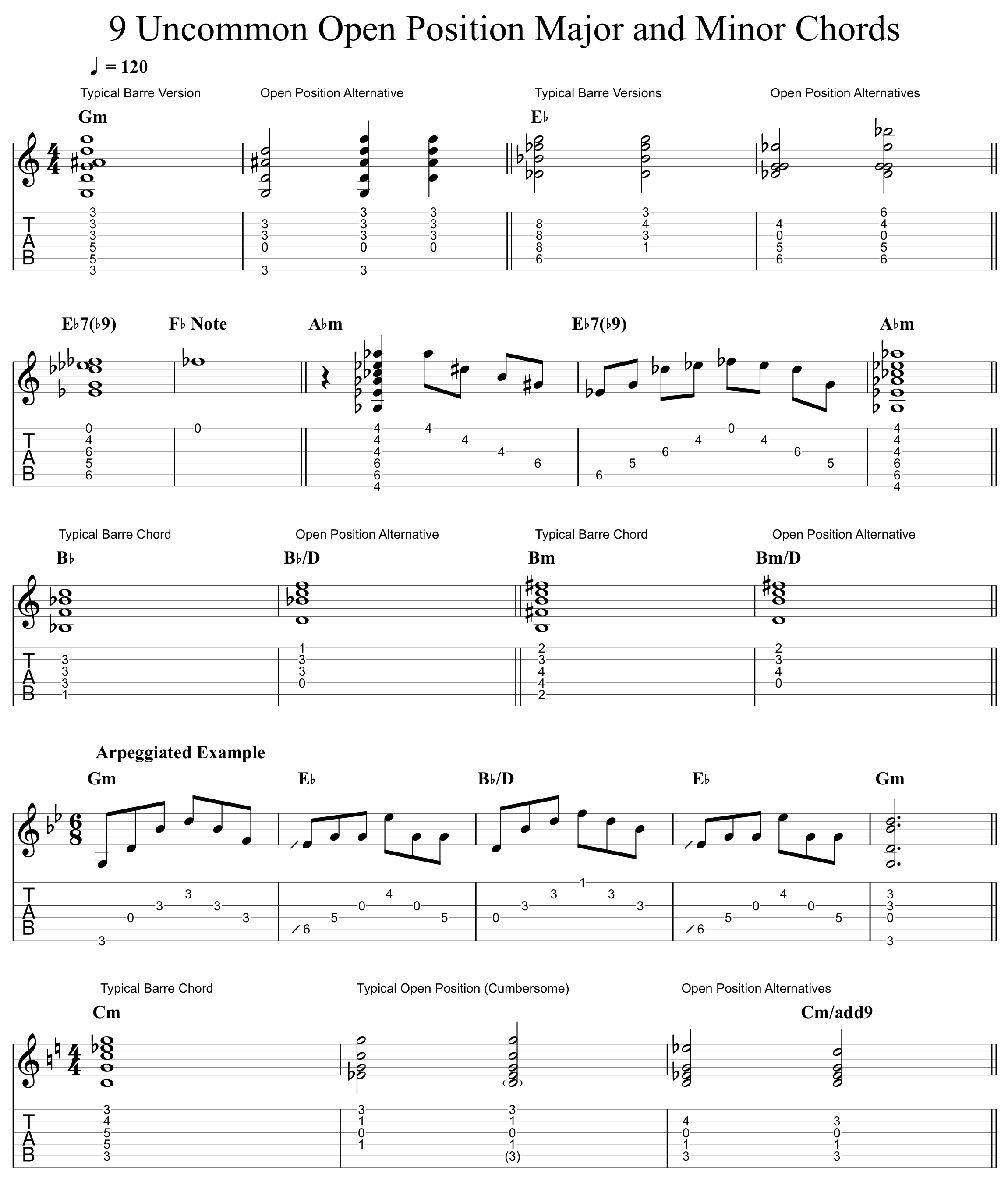
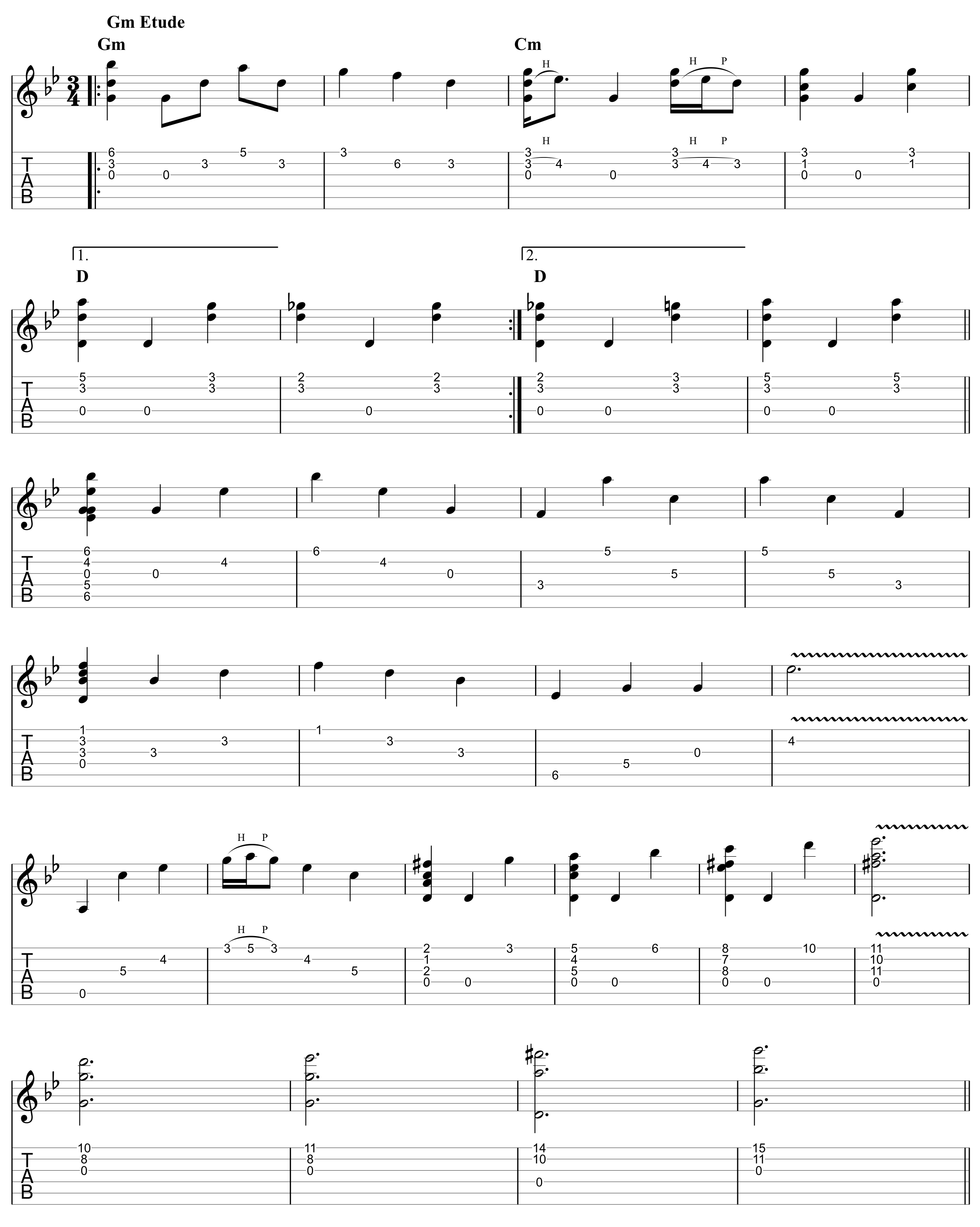
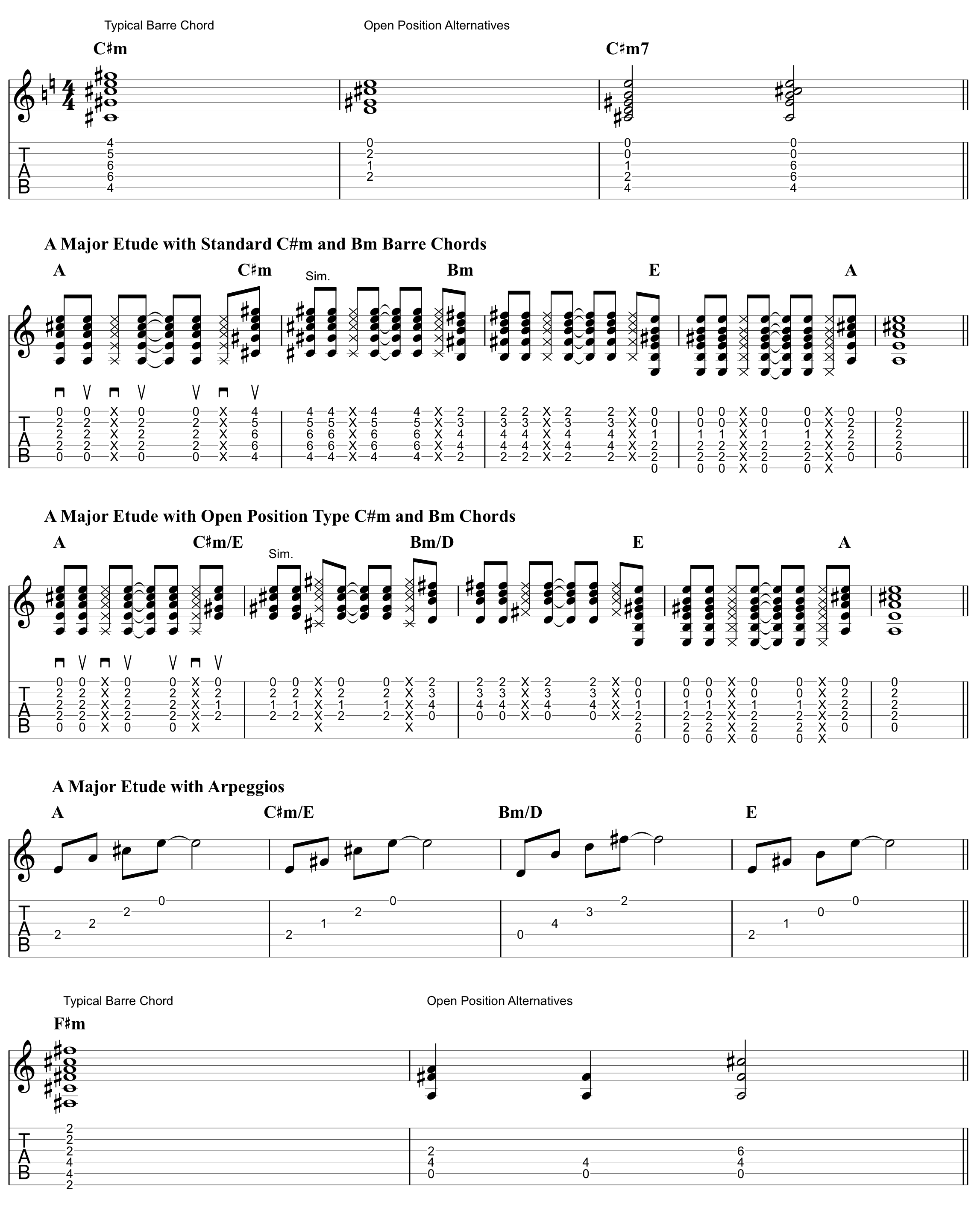
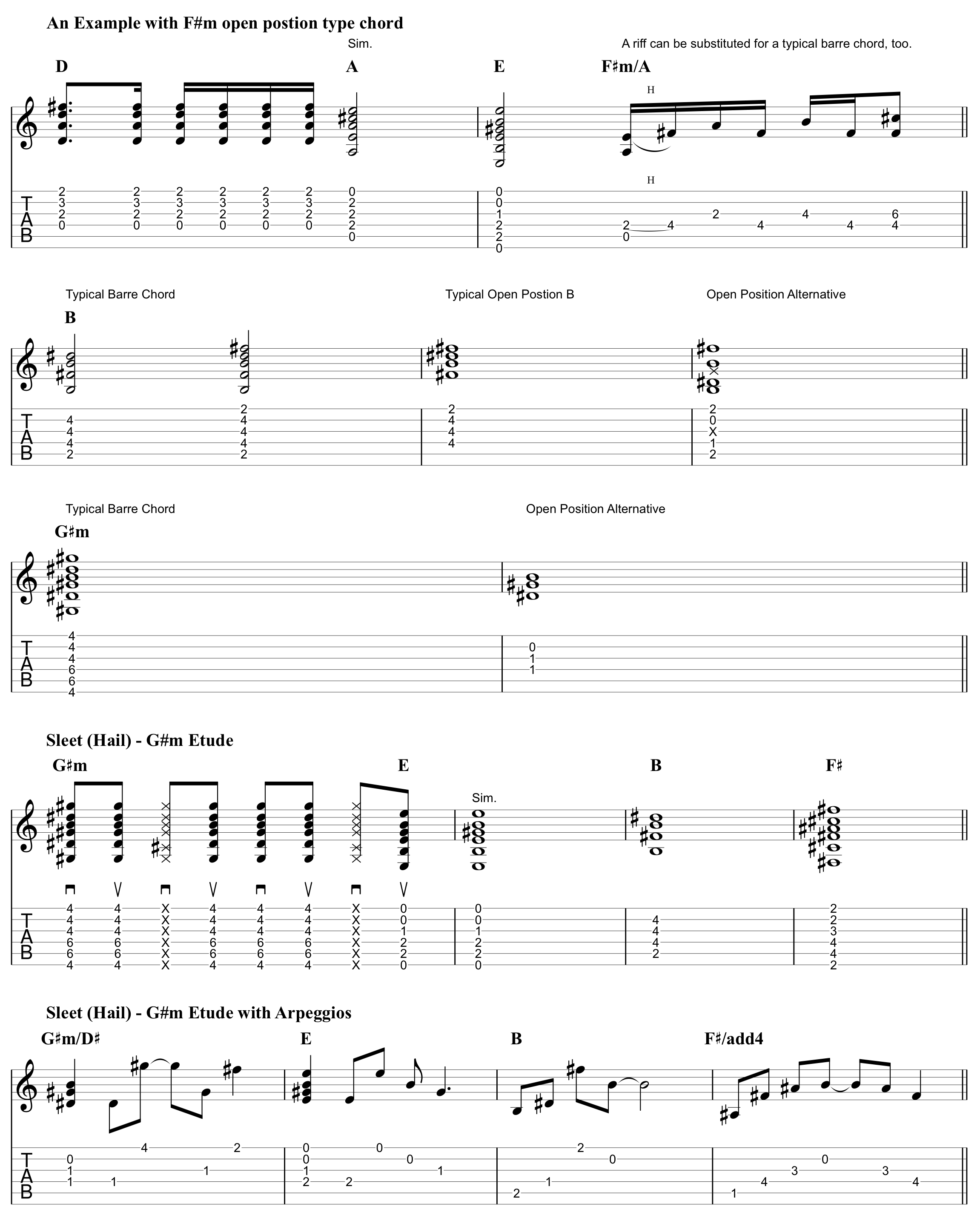

There are a couple of these that have multiple names. G#m can also be Abm, Bb could technically be A#, C#m could be Dbm, and F#m could be Gbm.
This lesson can serve as a stop gap for students who are new to barre chords and need one of these chords to play a song. These voicings are also very useful after you learn your barre chords. Many of these have become my go-to voicings for strumming rather than the typical barre chords. Experiment, have fun, and happy practicing!
